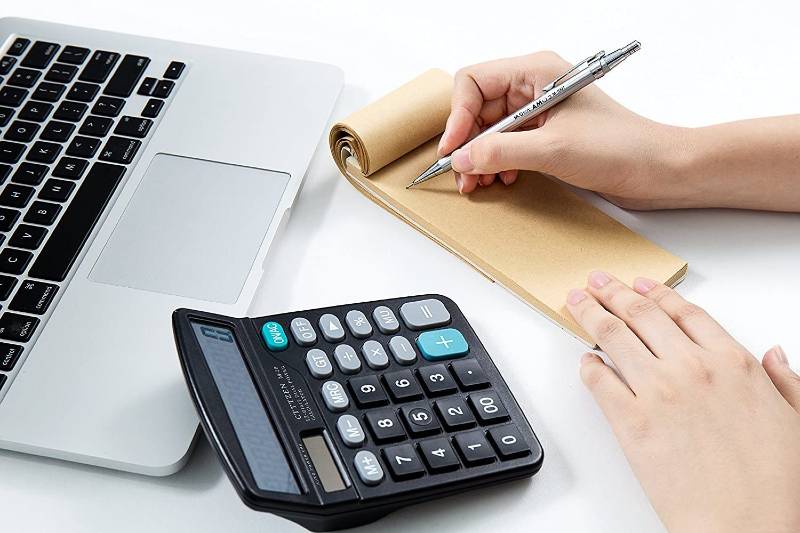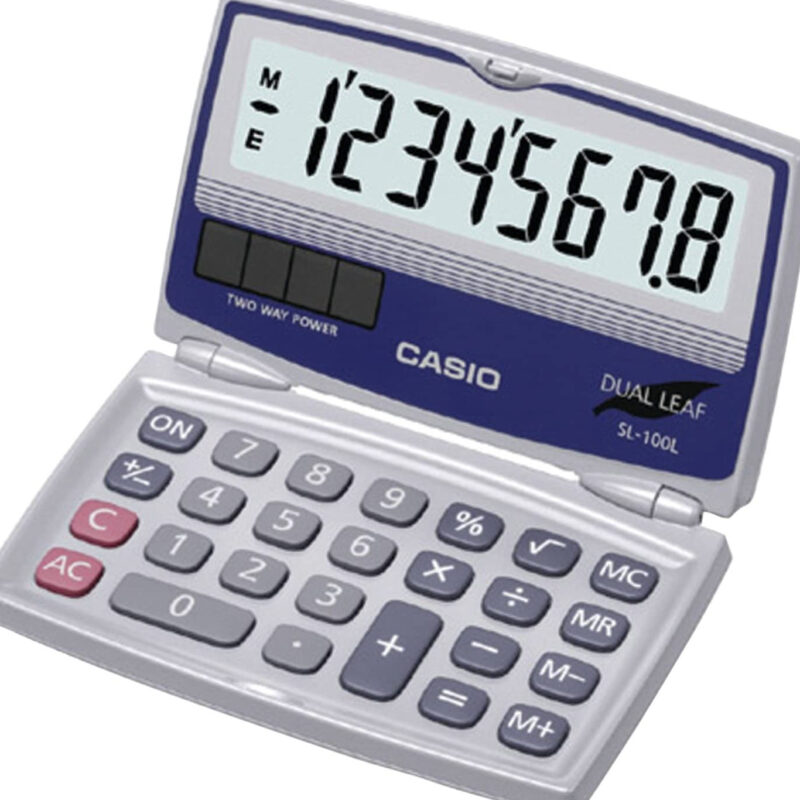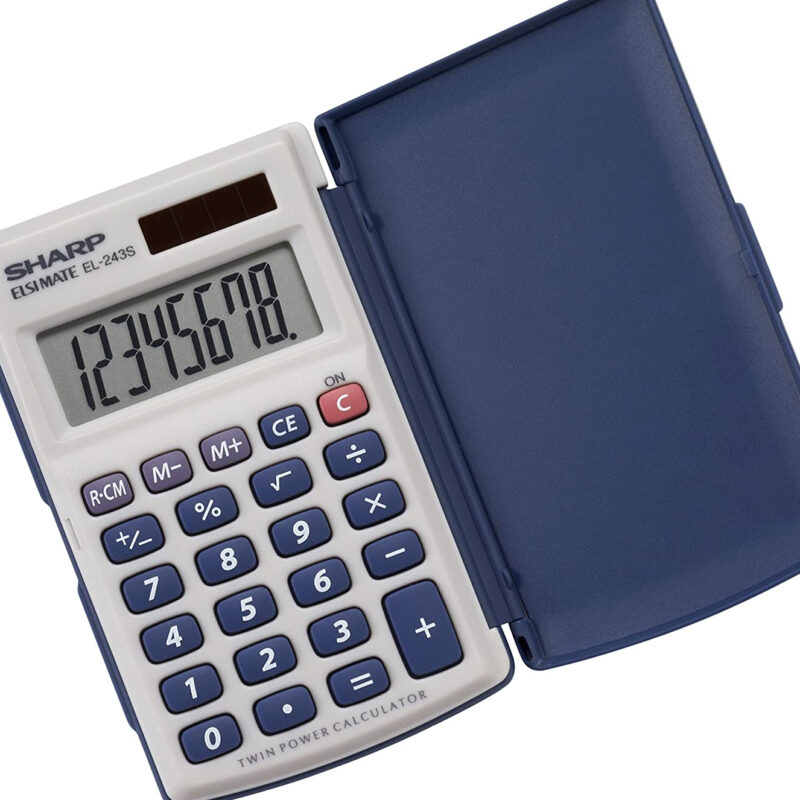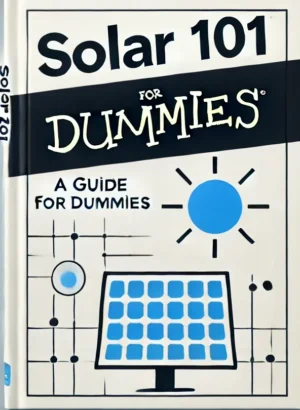Every student’s desk likely has one: a calculator that uses just a sliver of light to solve complex math problems.
But ever wondered exactly how do solar-powered calculators work?
These devices are equipped with solar cells, usually made of silicon, which is fantastic at turning light into electrical power.
When any light, whether from the sun or a room lamp, hits these solar cells, it excites electrons in the silicon, causing them to move and create electricity.
This process powers up the calculator, ready to tackle any equation.
In this article, I’ll explore more about how these devices operate, and I’ll share some tips on how to keep them running efficiently.
Key Takeaways
- Solar-powered calculators use light, particularly sunlight, to function, eliminating the need for regular batteries and reducing reliance on non-renewable energy sources.
- These calculators feature a solar cell on the top surface, made from silicon-based semiconductors that convert sunlight into electrical energy to power the device.
- The benefits of using solar-powered calculators include their eco-friendliness and convenience, making them always ready to use as long as there is sufficient light.
- Limitations include their dependence on sufficient lighting to operate effectively and the potential need for backup batteries in low-light conditions.
- To maximize their efficiency, use them in well-lit areas, regularly clean the solar panel for effective light absorption, and handle them carefully to avoid damaging the solar cells.
What Are Solar Powered Calculators?
Solar-powered calculators are devices that harness light to power up.
Even though it might sound like they’re something from the future, we’ve had them since the late 1970s.
The whole idea started with an inventor who was fed up with how big and bulky calculators were back then.
So, what did they do?
They popped in some solar cells, and just like that, no more need for regular batteries or plugging into a wall.
This smart move not only made calculators easier to lug around but also turned them into a green gadget.
How Are Solar Powered Calculators Designed?
Solar-powered calculators are designed to use sunlight as their power source, meaning no need for regular batteries.
They have a solar cell usually placed right on the top, perfect for catching as much light as possible.
These cells are built from special materials called silicon-based semiconductors, which are good at turning light into electrical energy.
Now, here’s the cool part: when sunlight hits these cells, it excites the silicon atoms and makes them release tiny particles called electrons.
These electrons start moving and create what we call an electric current, which is what powers the calculator.
The more sunlight there is and the bigger the solar cell, the more power you get.
But that’s not all.
These calculators also have a liquid crystal display (LCD), which uses very little power—just the right kind for the small amount of electricity the solar cells produce.
And what about when it’s cloudy or you’re indoors?
No problem.
Many solar calculators come with a backup battery so you can keep using your calculator without any hitches, even when there’s not enough light.
What Are the Advantages of Using Solar-Powered Calculators?
Solar-powered calculators offer several advantages that make them an appealing choice for anyone in need of a reliable and eco-friendly computing tool:
- Eco-Friendly: First off, these calculators are great for the environment. They use sunlight, which is a clean, renewable resource. This means you’re cutting down on waste and pollution from disposable batteries.
- Saves Money: Think about this—you won’t have to keep buying batteries. Since solar calculators run on sunlight, they can help you save a good chunk of change over time, especially if you find yourself reaching for a calculator often.
- Always Ready: They’re super convenient because as long as there’s light, they’re charging and ready to go. Whether you’re sitting by a window or even under a desk lamp, you’re set.
- Built to Last: These calculators don’t have battery issues like leaking or suddenly dying on you. Plus, solar calculators tend to last a lot longer without those harsh chemicals from batteries.
- Take Them Anywhere: They’re lightweight and compact, so you can easily slip them into a pocket or backpack, making them ideal if you need to make quick calculations on the move.
- Easy to Keep Up: Maintenance is a breeze. There aren’t any complicated parts that break down. Just keep the solar panel clean so it can do its job well.
- Dependable: The durability of solar-powered calculators is a big plus. The solar cells are tough and can keep your calculator running strong for years.
- Teaching Tool: They’re also fantastic for teaching kids about renewable energy. Using a solar calculator can spark discussions about how solar energy works and why it matters.
Are There Any Limitations or Drawbacks?
There are a few limitations to remember if you’re considering getting a solar-powered calculator.
Let’s break it down in a more conversational way:
- Need for Light: The biggest catch with these calculators is that they need good lighting to work. If you’re in a dim place, they might not perform as expected, which can be a bit of a hassle if you can’t always be in bright light.
- Handle with Care: Although they’re generally pretty tough, the solar panels can get scratched or blocked. Any damage or dirt on the panel can stop it from catching light properly, which means it won’t work as well.
- Backup Battery Issues: Some models have a backup battery for when there’s not enough light, but remember, these batteries will need to be replaced eventually. That adds to the cost and kinda defeats the purpose of going battery-free for the environment.
How Can Consumers Optimize the Use of Solar Powered Calculators?
To get the best out of your solar-powered calculator and keep it running smoothly, here are some simple, actionable tips:
- Find the Light: Always try to use your calculator in bright areas. Whether you’re indoors or outside, placing it near a window or under strong artificial lights can make a big difference if there’s no sunlight around.
- Keep It Clean: The solar panel on your calculator is what catches the light, so you want to keep it spotless. Just give it a gentle wipe with a soft, dry cloth now and then to keep dust and fingerprints from blocking the light.
- Smart Battery Use: If your calculator has a backup battery, save it for those times when you need it—like in low light conditions. Using solar power as much as possible not only saves your battery but also means you’ll have to replace it less often.
- Handle With Care: Be gentle with your calculator. Avoid anything that could scratch the solar panel. Even a small scratch can make it less efficient at catching light.
- Proper Storage: When you’re not using your calculator, store it in a place that’s clean and dry. Keep it away from direct sunlight which might overheat it, and away from too much dust which can build up on the solar panel.
FAQs
How Does Solar Calculation Work?
Solar-powered calculators work by using solar cells that convert light into electrical energy, which powers the calculator’s operations.
Do Solar-Powered Calculators Need Sunlight?
Solar-powered calculators need sunlight to function optimally, but they can also work in strong artificial light.
Do Solar Calculators Run Out of Battery?
Solar calculators can run out of battery if they include a backup battery system and it’s not charged sufficiently.
Are Solar Calculators Rechargeable?
Solar calculators are rechargeable, as models with backup batteries can be topped up through exposure to light, maintaining their power supply.
Conclusion
As promised, we’ve dived into how solar-powered calculators work and shared some tips to keep them ticking perfectly.
Remember, the simple trick to keeping your calculator happy is making sure its solar panel stays clean and gets plenty of light.
Here’s a cool little hack: if you find yourself often in dim spots, why not clip a small, bendable reading light onto your calculator?
It’ll give it just enough light to keep going.
Do you still have questions or perhaps a neat trick of your own to share?
Don’t hesitate to get in touch or leave a comment below.
Let’s keep making the most out of our eco-friendly gadgets together!
Join our solar microdosing newsletter and get bite-sized, easy-to-understand insights into the world of solar energy.
From how solar panels work to building your own DIY solar system, we’ve got you covered.





